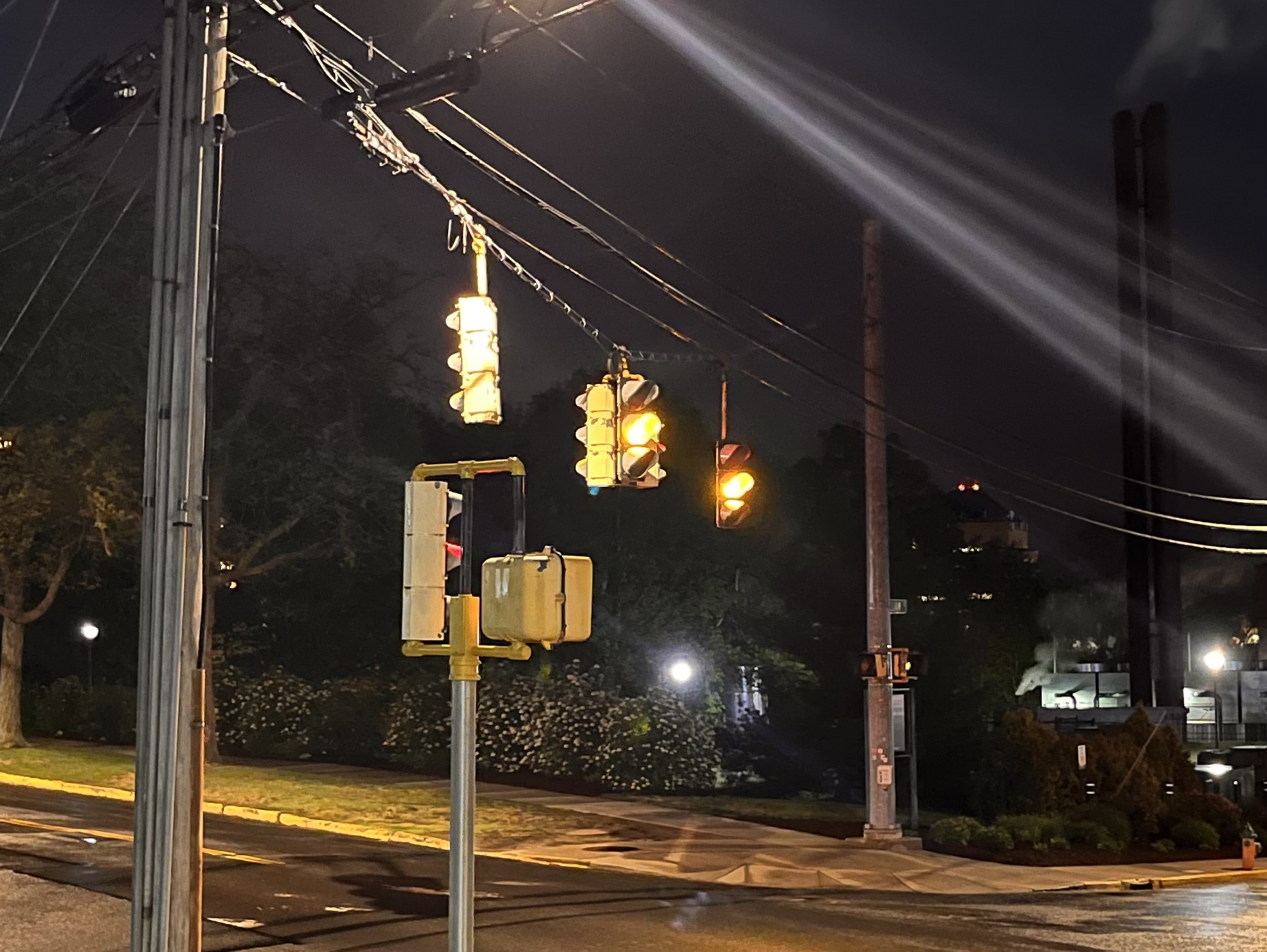
I lost a friend last week. Not to death, nor to fallout nor argument nor any of the other main friendship-ending causes. No, I lost this friend to repair.
The friend in question is a traffic signal. I can see this light, situated at the corner of William St. and High St., from my north-facing window in Alpha Delta Phi; I cross through it when I go to The Argus for production meetings; I pass it by god-knows-how-many times per week. Until recently, there was nothing notable about it—it followed the usual High Street traffic light routine, cycling through red, green, and yellow by day and blinking yellow by night.
Then, a few weeks before spring break, its night cycle never ended. The yellow blinking continued 24/7. Some bold pedestrians began jaywalking like never before, while others cowered in fear at the corner waiting for a break in the seemingly endless stream of cars. At first I, like many others, was annoyed by this disturbance in the usual traffic routine.
“Someone’s going to get hit by a mini cooper going 70 miles an hour down High,” I said to my dear friend Arts & Culture Editor Kat Struhar ’25. “What do we think the odds are that someone fixes it before break?”
It did not get fixed before break. In fact, it remained blinking yellow for nearly two months. As the steady blink continued, however, my annoyance faded into familiarity. It was reliable. Constantly fluctuating between on and off, as any slow strobe does.
I’d look out my window at 2 a.m. on a random Monday night as I struggled to finish an essay and simply stare at the blinking light. I’d lose myself in its pattern, its regularity. It helped to ground me at a time when a lot of the steadiness I’d relied on for my Wesleyan career was yanked out from under me. My social world got rocked, I had back-to-back tests and projects, and then I caught pneumonia and started coughing up blood. Fun times!
“I think I’m developing a parasocial relationship with the blinking traffic light at William and High,” I said to my concerned friend News Editor Sulan Bailey ’25, among others. “Its name is Blinky. It’s so nice.”
As time went on, Blinky remained a stabilizing force in my life. Was it the healthiest coping mechanism ever? That’s for you to decide. But it did help. Nights when I’d come home feeling anxious or stressed, I could ground myself by staring at the blinking yellow. Days when I was rushing down High Street in a panic to get to a meeting for which I was already late, Blinky reminded me that it wasn’t the end of the world. I’d shout, “Hi Blinky!” whenever I crossed that intersection and sometimes even plan my routes to specifically go through there, even if it was more inconvenient.
Then they fixed Blinky. I noticed last Thursday on the way to The Argus office. The usual, austere, unfeeling green, yellow, red, repeat cycle was back. What’s worse, the light didn’t even blink at night anymore. The consistent rhythm that Head Copy Editor Anne Kiely ’24 wrote about last November was disrupted.
I understand why they fixed it—having a four-way yield in the middle of the night makes sense, but during rush hour it could get someone killed. Pedestrians need their protected signal during the day, cars need to know who has the right of way, et cetera et cetera.
But I do miss Blinky. While, obviously, my mental health didn’t hinge on the steady yellow blink, it was something I used to ground myself for a while. I’ll find something else, I’m sure. Blinky was just one of a series of seemingly mundane or simplistic things I’ve used through my life to keep myself steady, and I’ll move on to the next one soon. Before I do, however, I want to eulogize the friend that helped me without even knowing. Its blinking was gone in the blink of an eye, but its reminder to find stability and peace in the simple patterns of the world will remain with me.
So goodnight, Blinky. I hope to see you again soon. Until then, I suppose, I’ll wait my turn at the crosswalk like everyone else.
Sam Hilton is a member of the class of 2025 and can be reached at shilton@wesleyan.edu.


Leave a Reply